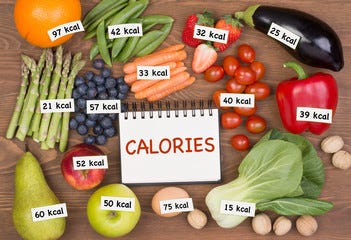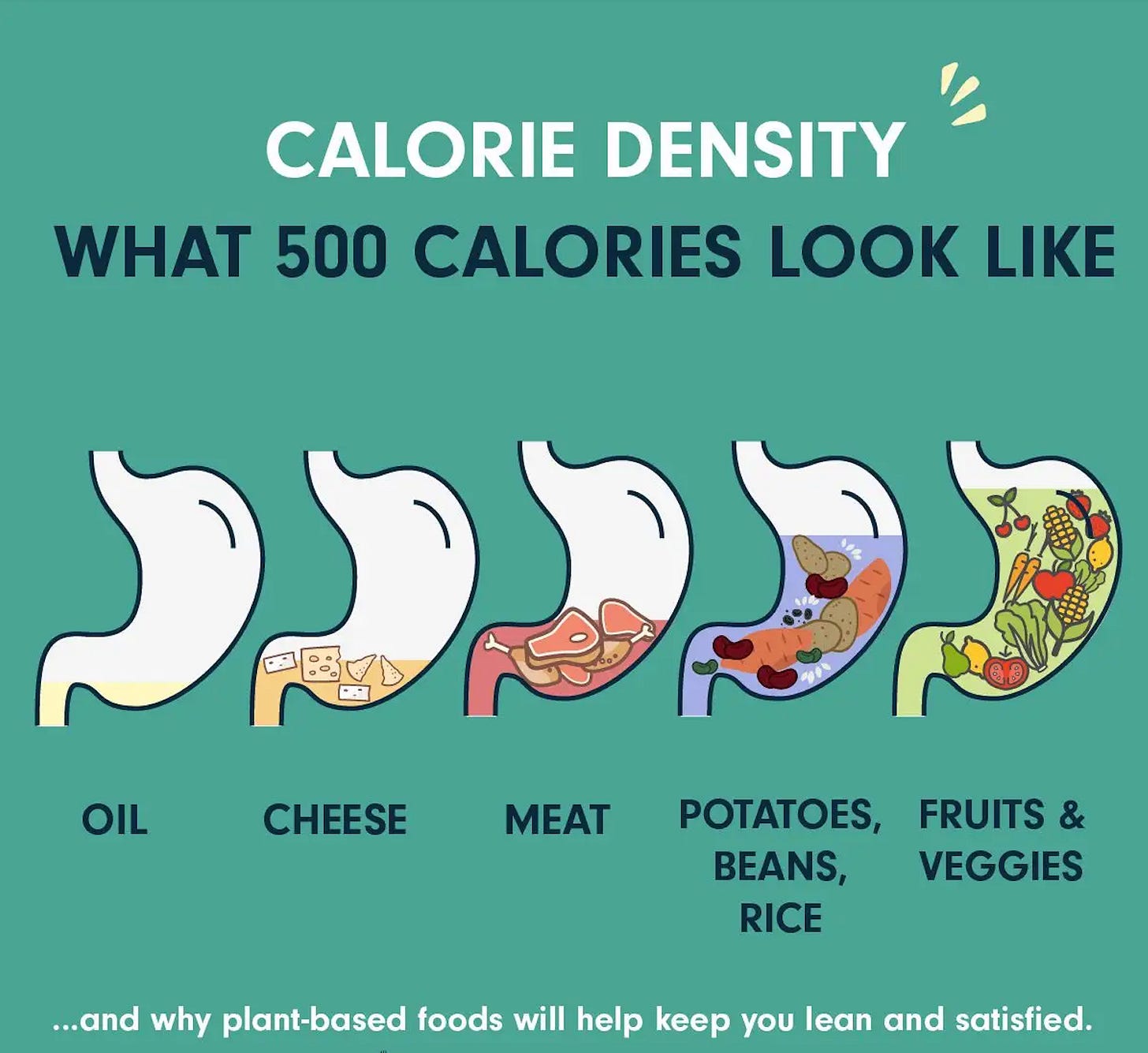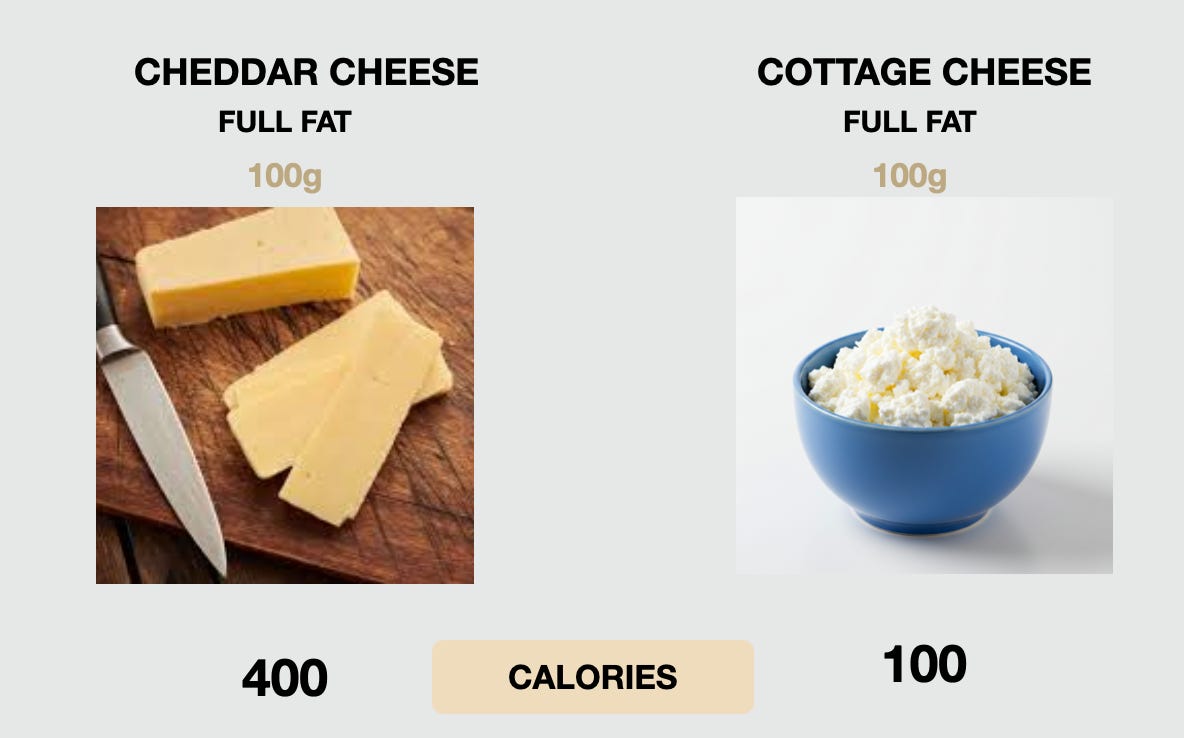NO MORE COUNTING CALORIES
LET'S KEEP IT EASY AND SIMPLE
WHAT ARE CALORIES?
Calories are a unit of measurement that describes the amount of energy released when a given food is broken down by your body. This energy is used by our body to fuel bodily functions, repair and growth. Any excess in energy is stored as fat mostly under your skin or between your organs.
(1 Kcal= 1000 calories also referred to as 1 Calorie)
WHAT IS CALORIC DEFICIT VS CALORIC SURPLUS?
In order to lose weight, you need to be in a caloric deficit state (eating less calories than your body is using).
In order to gain weight, you need to be in a caloric surplus state (eating more calories than your body is using).
HOW MANY CALORIES DO MACRONUTRIENTS PROVIDE?
Macronutrients are nutrients that your body needs in large quantities.
Macronutrients provide different amounts of calories per gram:
1g of protein provides 4 Calories
1g of carbohydrate provides 4 Calories
1g of fat provides 9 Calories
These macronutrients require different amounts of energy to be digested (Thermal effect of food).
When you take in 100 Calories from steak (or any protein), your body uses 20-30 Calories to digest that steak.
When you take in 100 Calories from bread (or any carbs), your body uses 5 to 10 Calories to digest that bread.
When you take in 100 Calories from olive oil (or any fat), your body uses 0 to 3 Calories to digest that oil.
THE GOOD NEWS…
Eating proteins boosts your metabolism temporarily and you use up more energy just to break down your food!!
HOW MANY CALORIES DO YOU NEED PER DAY?
Your daily energy requirement = basal metabolic rate (energy needed if you were lying down all day) + energy needed for your activity level (sedentary, moderately active, very active)
Calculate your basal metabolic rate then see your total daily energy requirement based on your activity level (on the right side). Remember this is just an estimate.
You need to eat 500 Calories less per day in order to lose 0.5 kg per week.
To put this into perspective, one piece of brownie (110g) or tiramisu (145g) provides about 500 Calories
Sounds painful. I know.
Stay calm. I have a solution for you.
WHAT IS CALORIC DENSITY?
Caloric density is the number of calories by the weight of the food.
Leafy and non-starchy vegetables and fruits have the lowest caloric density (few calories in large amounts of food) while cheeses, nuts and oils have the highest caloric density (many calories in small amounts of food).
For example:
100g of mixed salad contains just 20 Calories, while 100g of olive oil contains 880 Calories
100g of chicken breast contains 165 Calories, while 100g of cheddar cheese contains 400 Calories.
This table shows the calories present in about 500g of the food.
Be mindful of the caloric density spectrum as you make your food choices.
See below how much the same amount of calories will fill your stomach depending on the source of the food.
Foods with low caloric density such as non-starchy vegetables help you feel fuller while keeping your calories low.
BE MINDFUL OF DRIED FRUITS:
100 g of raisins contains 300 Calories, while 100 g of grapes contains 70 Calories.
BE MINDFUL OF NUTS:
Snacking on 100g of cucumber sticks will give you 15 Calories, while 100g (35 halves) of walnuts will cost you 650 Calories.
8 Sticks of cucumbers= 15 Calories, 8 walnut halves= 130 Calories
BE MINDFUL OF CHEESE
Cheeses are a good source of complete protein. They are also high in fat. Naturally occurring fats in foods are essential for health and satiation. All our cell membranes as well as our brain are made up of fats. Consume them as full fat to reap the benefits of fat soluble vitamins. Moderation is warranted if you want to lose weight.
BE MINDFUL OF LIQUID CALORIES:
One glass of orange juice provides the same amount of energy as three oranges.
Which option would make you feel fuller?
The orange juice is a sugar shot (even if it is a healthy fruit). It will take you on a ride on the sugar roller coaster.
The orange fruit is full of fibers so the fiber will cushion the sugar and reduce the sugar spike. You may also be satisfied with just one orange instead of three liquid oranges. To feel more satiated, consider eating your calories instead of drinking them.
BE MINDFUL OF NATURAL SWEETENERS:
1 tbsp of honey provides the same amount of energy as a small fruit (without the cushioning fiber)
BE MINDFUL OF ALCOHOL:
1g of alcohol provides 7 empty Calories. No nutrients. Just calories.
Which option might you consider next time?
What else could you eat for 170 Calories?
Are you curious to find out how much steak or fish you can have for 170 Calories?
LET’S KEEP IT EASY AND SIMPLE
If you value your health, stay away from processed foods. They increase your toxic load and mess up the natural functioning of your body (your hormones, your metabolism, your satiation cues…).
TO LOSE WEIGHT:
→ drink a big glass of water 30 min before your meal to avoid thirst eating
→ load up on non-starchy vegetables (season with mustard, lemon, apple cider vinegar, salt and pepper)
→ savour your protein
→ use good fats sparingly for cooking and salads
→ treat yourself to a small fruit
→ drink a cup of herbal tea to signal to your brain the end of the meal (and maybe brush your teeth to reinforce the message)
→ indulge in one portion of homemade dessert once a week in order to avoid the sense of deprivation as it may lead to slipping into binging behaviour after a few weeks
(if you are too hungry or losing weight too fast (more than 0.5 kg/week), slow it down by adding a bit of good fats (avocado, nuts and seeds…)
TO GAIN WEIGHT:
→ savour your protein
→ have some seasoned non-starchy veggies. Add some starchy veggies (potatoes, sweet potatoes, pumpkin, butternut squash, carrots, corn… ). Alternatively, add some legumes (beans, lentils, chickpeas…)
→ use olive oil generously on your veggies. Add some avocados, nuts and seeds.
→ treat yourself to some fruits with peanut butter/ almond butter/ hazelnut butter
→ snack on dried fruits (raisins, dates, figs, apricots, goji berries, mulberries) with mixed nuts
→ drink your calories as a smoothie (e.g., milk, fruits, peanut butter, seeds)
→ indulge in one portion of homemade dessert once a week
SOME PRACTICAL TIPS:
Make a mental list of what you will eat for each meal of the day and visualise your meal. Tick the boxes in your mind as you consume each food.
Plan what you will eat in the morning before decision fatigue sets in and you fall prey to temptations. As the day progresses, we have to make hundreds of decisions and face several obstacles and frustrations, this tends to weaken our wise brain and switch on our impulsive brain. It becomes much harder to handle triggers (emotions, boredom, fatigue, the sight of appealing food). To avoid this pitfall, decide in the morning what you will eat and write it down on your phone or in a small notebook or print the below sheet, laminate it and stick it on your fridge - use an erasable marker to set your menu every morning.
We tend to underestimate or forget what we ate during the day. Writing down our food helps us make better decisions as the day progresses and holds us accountable.
Here’s a sample menu for 70g of protein/day.
(3 eggs: 18g, 100g chicken: 30g, 100g fish: 22g)
Substitute any protein in there:
* consume lean or medium fat chicken and beef. Avoid big chunks of fat.
TIP: WEIGH THESE PORTIONS ONCE TO SEE WHAT THEY LOOK LIKE.
Create a few menu options to reach your daily protein requirement. This way you don’t have to count grams of protein every day. You can use any weight loss App to help you calculate your protein intake by adding your food (from animal sources) under one meal for ease.
For example:
Here are other options for 70g of protein/day:
Protein Option 1:
200g yogurt (10g)
100g beef steak (30g protein)
100g chicken breast (30g protein)
Protein Option 2:
1 egg + 30g cheddar cheese (13g protein)
100g beef (30g protein)
100g Tuna (25g protein)
Protein Option 3:
200ml milk + 100 ml cottage cheese (19g protein)
100g shrimps (24g)
100 chicken breast (30g)
WHAT ABOUT CALORIE TRACKING APPs?
I recently tried a calorie tracking app to see if it helps.
Here’s how it works:
You log in your food intake for each meal.
The app measures your caloric intake and your macronutrients breakdown.
You log in your height and weight and daily physical activity and the app calculates your daily energy requirement.
All of the above are estimates and they are not accurate. There is no way for the app to know what is exactly in my food and how much I really burned in a given activity.
Here’s my experience:
It was tedious and time consuming to log my food one by one. Definitely not sustainable.
My brain became obsessed with food.
The app showed me a calorie bar reflecting calories consumed and calories remaining.
According to the app, I was eating on average 1300 Cal per day and my daily energy requirement is about 1700 Cal. At this rate, I should’ve been losing half a kg per week but I didn’t. This clearly reflects the inaccuracy of the app.
On multiple occasions, I felt I could indulge some more to fill the calorie bar. This was the first warning signal to stop using the app.
The app also showed me my food consumption by macronutrient. The app follows the following Macronutrient breakdown: 25% of calories must come from proteins, 50% from carbs and 25% from fats. However, I’m on a low carb diet so I tend to compensate by eating more good fats.
Seeing my fat bar exceed every day made me very conscious to the point that I decided to skip the olive oil in my salad one night. Now a salad without olive oil is food for goats, not for humans. This was the ultimate sign to stop using the app.
Counting on an app to determine my satiety level led me to disconnect from my internal cues of hunger and satiety. It also created incentives that did not align with my values.
I‘m back to using the mindful eating method. You might like it too if you try it.
Tell me in the comments which method works best for you and why (method 1: writing your daily menu in the morning + mindful eating or method 2: calorie counting app). This will help me appreciate other perspectives and learn more about obstacles people face.
DISCLAIMER: All information provided by Abir Ballan is solely intended for educational purposes and is not a substitute for expert advice, diagnosis, or treatment regarding medical or mental health conditions. Always consult your physician before making any decisions related to your physical or mental health.
ABOUT THE AUTHOR
Abir Ballan is a Holistic Health Practitioner. She has a Masters in Public Health, a Graduate Degree in Mind, Brain and Teaching, a BA in Psychology and NLP certification. She is a children’s author with 27 published books.


















Excellent advice, Abir.
I am immediately going to substitute cottage cheese and/or strawberries with my, albeit, not to wise, nightly snack. I have several other take aways (not those sort!)
Very good pictorial representation btw.
I have dropped 2 pounds ---though an hour of energetic pickle ball might have helped !!!